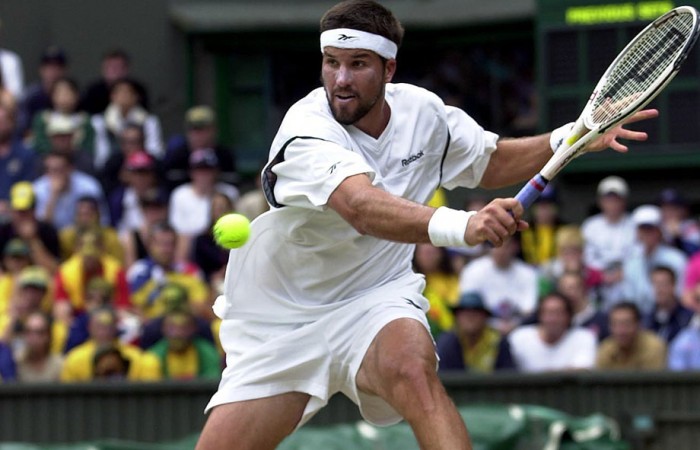Improve your net game Part I
Former ATP player and current coach Simon Youl delivers his top tips on how to hit the perfect volley.
Melbourne, 13 June 2013 | Simon Youl | Australian Tennis Magazine

 Why develop your net game?
Why develop your net game?By developing your net game you will build a stronger armoury of choice to do battle on all surfaces against a variety of opponents. Improving this area provides more tactical options and your offensive game and weapons will reap the benefits – and yes, it’s more fun!
In looking at your technical fundamentals within your shot, always look at the four phases:
The right grips will provide a solid foundation for your net game. The forehand volley should be played with a composite or continental grip and the backhand volley a continental. The composite is somewhere between the eastern forehand and continental. Your overhead should be a full continental grip.
Develop an overhead with an abbreviated backswing that allows you to hit to all areas of the court. And don’t forget to work on your jump smash. Obviously for drive volleys your ground stroke grips will be used.
Achieving wrist stability in your grip will provide a foundation to develop a stronger swing. The non-dominant hand should be supporting the racquet head at the throat in readiness for all volleys, including players with double-handed backhands.
Move to the ball with strong flexed legs and fast feet with small steps to control balance and reach wide floating balls. It’s important to push from your right foot to move to the backhand volley and push with your left foot to move to a forehand volley.
Keep a strong base of support before and after contact of the ball. Only use lunging steps for balls powered past a volleyer. Players must learn after flow stepping to move to any ball to the side with time as if it had been perfectly fed to them.
In your initial turn, align your shoulders horizontally to the ball path and then keep your eyes and head balanced over the ball contact position to the completion of the swing. Use your non-dominant hand on both volleys as a balancer when you initiate your forward swing and follow through.
Understand the different size backswings for various shot situations and ball heights but predominantly work on the short backswing, as this is needed to control power coming at you.
On your forehand volley work on keeping the hand and arm in front of the hitting shoulder and on shortening the backhand swing and allow your arm out to the side on stretch a little.
On your forward swing keep the racquet head above your wrist, creating a high-to-low racquet trajectory with good understanding that the racquet face needs to also travel slightly inside the ball.
Next week
In the second part of “Improve your net game”, Simon Youl advises on volley zones, provides key tactical advice and gives his top tips for developing your net game.
For more tips from the experts on how to improve your game, check out the latest edition of Australian Tennis Magazine.
Simon Youl competed on the ATP Tour for 13 years and has been a coach for the past 12 years. He is now a National Coach based in Tasmania and is a Tennis Australia High Performance qualified coach.